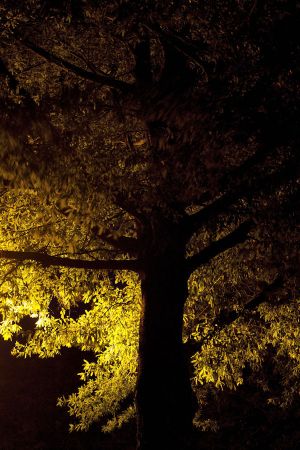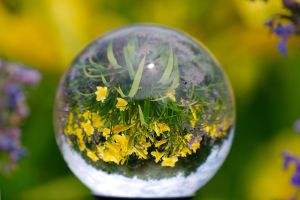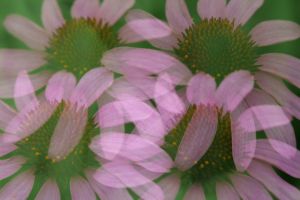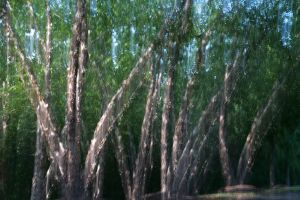See the World Around You in a Whole New Way!
Most of us have been at home for several months, working on keeping ourselves busy, pushing ourselves to find ways to improve our photography and (hopefully) learning new camera skills. You probably think you’ve exhausted all of the “photographic possibilities” in your neighborhood, but here are a few suggestions for using your camera to create images that will help you see the world around you in a whole new way!
Create a “still life” using a piece of fruit

Photograph it in soft light – early morning light works well – with an even background, and a large aperture (small number) to blur the background. The water drops on this apple were actually from an overnight rain. The apple was left outside on a rail, after falling off a tree nearby.
Do some night photography, using street lights to illuminate your subject

Use a tripod and a remote release to prevent camera shake. Since you are using a tripod, use a low ISO and a long exposure. Try changing the White Balance to change the color of the leaves.
Photograph a flower garden using a crystal ball

Purchase an inexpensive crystal ball ($16.99 on Amazon) and put it on a mini-tripod in the middle of a flower garden. Use a large aperture (small number) to blur the background and zoom in on the ball. Try to do this photograph on a sunny day, with a few clouds, to produce interest in the reflected sky.
Create a multiple exposure using your camera

Find a single flower, set the focus and exposure, start the Multiple Exposure setting, place the flower in different locations in your frame, and complete the exposure.
Create an impressionistic photo by using Intentional Camera Movement (ICM)

Use the lowest ISO possible, a slow shutter speed (1 second or more) and practice slow, even movements. If there is too much light to slow down the shutter to 1 second, using a Neutral Density Filter will help.
